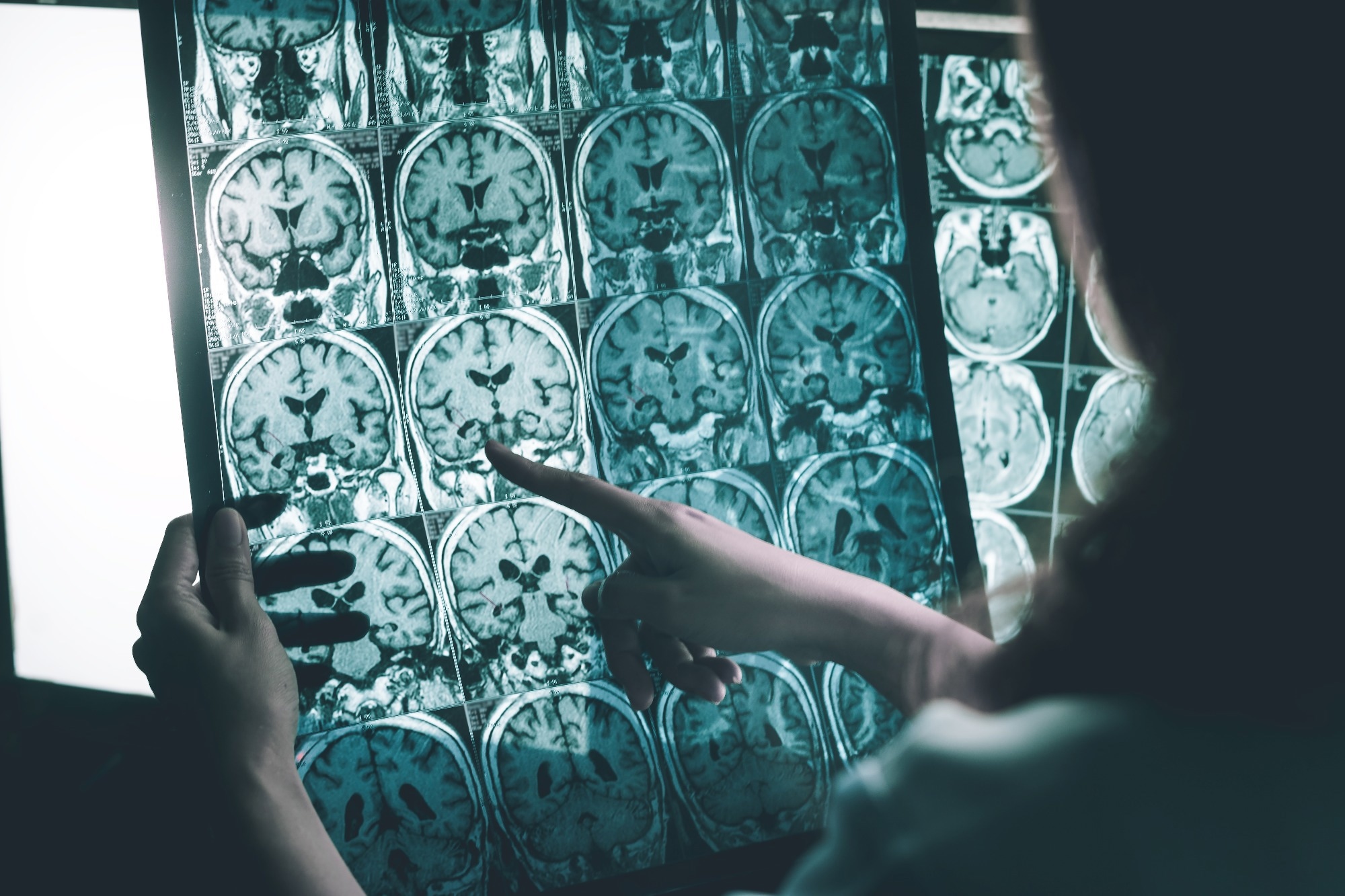Artificial intelligence (AI) is changing the world as we know it, opening up new possibilities as deep learning applications are able to process large data sets and analyze information from several sources almost instantly.

Image Credit: Atthapon Raksthaput/Shutterstock.com
AI can be used in medical applications to detect diseases, transcribe medical documents, improve communications, and advance drug discovery and development. Recently, a group of researchers at Massachusetts General, Harvard Medical School’s largest teaching hospital, has been using AI to read the results of tens of thousands of MRI scans to carry out the diagnostic process at scale.
Published in the journal PLOS ONE, the team reveals how they have been applying deep learning architecture to processes to crunch large sets of clinical data to identify the risk of Alzheimer’s. The results are around 90% accurate.1
Our results — with cross-site, cross-time, and cross-population generalizability — make a strong case for clinical use of this diagnostic technology.
Matthew Leming, Lead Author and Research Fellow, Harvard
MUCRAN: Deep-Learning-Based Diagnostics
The team named their model MUCRAN, which stands for Multi-Confound Regression Adversarial Network: an adversarial process on a specialized scheduler to develop the model on large clinical datasets while regressing multiple confounding factors.
Using the data from thousands of MRI scans from patients with and without Alzheimer’s disease, Leming, an investigator at the Massachusetts Alzheimer’s Disease Research Center, helped develop a disease detection model.
Deep learning is a machine learning method inspired by the neural pathways in the human brain, which uses artificial neural networks to extract and process advanced features from multiple layers of data at extremely high speeds.
In this study, the team tested their model using data from five different datasets acquired from five datasets — Mass. General post-2019, Brigham and Women’s Hospital pre- and post-2019, and outside systems pre- and post-2019.1
From this, the team was able to determine whether or not the deep learning system was able to identify cases of Alzheimer’s from a diverse dataset not limited to just one location or timeframe.
Overall the system processed around 38,000 images, of which about one-third were from patients considered at risk of Alzheimer’s. The remaining scans were from those with no symptoms or visible risk of the disease. Subsequently, the deep-learning-based diagnostic model was able to detect a risk of Alzheimer’s with 90.2 percent accuracy.1
Removing Limitations
What also sets the new model apart from other previously developed AI-based diagnostic tools is that this system was able to remove limitations and certain variables, including age, while remaining effective.
Alzheimer’s disease typically occurs in older adults, and so deep learning models often have difficulty in detecting the rarer early onset cases.
Matthew Leming, Lead Author and Research Fellow, Harvard
To address this, the team developed the deep learning model by making it “blind to features of the brain that it finds to be overly associated with the patient’s listed age” explained Leming.1
Other limitations the team set out to address included ensuring the model was able to read results from multiple MRI sources. For instance, results generated from an MRI scanner manufactured by one company may differ in format from those from other types of MRI machines. Therefore, a deep learning mechanism trained using data from just one type of machine may find it difficult to make predictions accurately based on the data of another.
By using data sets from a variety of real-world sources, the team was able to ensure their innovative AI model was able to incorporate an “uncertainty metric” into its modeling to make accurate predictions.
Our results — with cross-site, cross-time, and cross-population generalizability — make a strong case for clinical use of this diagnostic technology.
Matthew Leming, Lead Author and Research Fellow, Harvard
MUCRAN could benefit patients by offering an early Alzheimer’s diagnosis, which offers opportunities to receive early treatment and wider access to clinical trials. This shows how, once again, AI has the potential to improve medical and healthcare applications with a positive impact on human health.
References and Further Reading
- Chase, B. (2023) Using AI to target alzheimer's, Harvard Gazette. Harvard Gazette. Available at: https://news.harvard.edu/gazette/story/2023/03/using-ai-to-target-alzheimers/
- Leming, M., Das, S. and Im, H. (2023) “Adversarial confound regression and uncertainty measurements to classify heterogeneous clinical MRI in mass General Brigham,” PLOS ONE, 18(3). Available at: https://doi.org/10.1371/journal.pone.0277572
Disclaimer: The views expressed here are those of the author expressed in their private capacity and do not necessarily represent the views of AZoM.com Limited T/A AZoNetwork the owner and operator of this website. This disclaimer forms part of the Terms and conditions of use of this website.